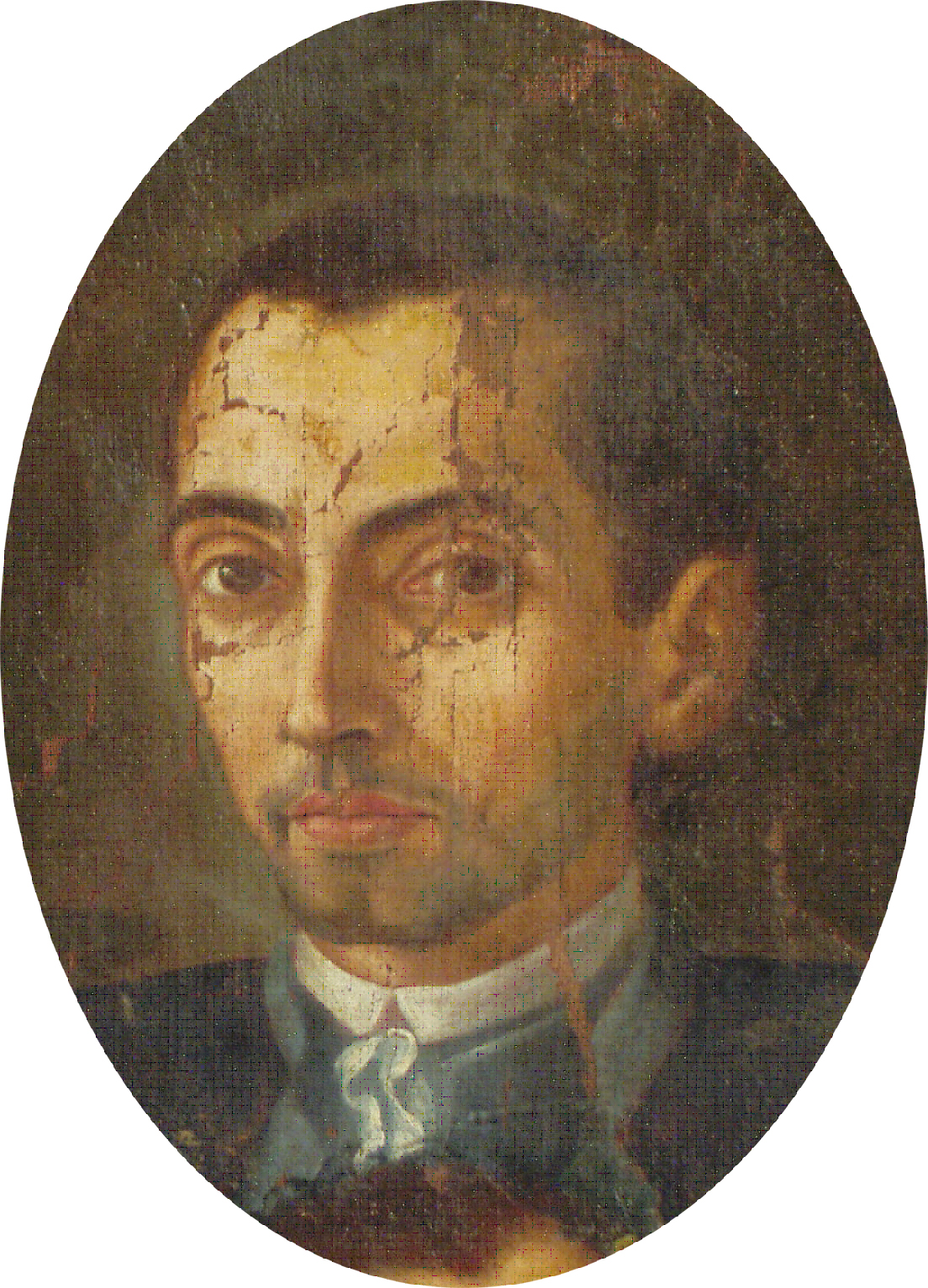José Nicolás De La Escalera on:
[Wikipedia]
[Google]
[Amazon]
José Nicolás de Escalera (1734 – 1804) was a 
 De Escalera worked mainly in
De Escalera worked mainly in
Cuba
Cuba ( , ), officially the Republic of Cuba ( es, República de Cuba, links=no ), is an island country comprising the island of Cuba, as well as Isla de la Juventud and several minor archipelagos. Cuba is located where the northern Caribbea ...
n painter specializing in religious scenes and portraits. He is often described as "Cuba's first painter", having been the earliest native-born artist to create a large, surviving body of professional work.

Life and work
De Escalera was born in San Cristobal de la Habana to anAndalusia
Andalusia (, ; es, Andalucía ) is the southernmost Autonomous communities of Spain, autonomous community in Peninsular Spain. It is the most populous and the second-largest autonomous community in the country. It is officially recognised as a ...
n father and a Creole mother on September 8, 1734.Cultura Cubana: Jose Nicolas de Escalera and Dominguez (1734 - 1804), his paintings; https://translate.google.com/translate?hl=en&sl=es&u=http://culturacubana.net/jose-nicolas-de-la-escalera-y-dominguez-1734-1804-sus-obras-pictoricas/&prev=search retvd 12 26 15 Little is known about his artistic education; he appears to have been self-trained, and his work bears some resemblance to that of the eighteenth-century Andalusian school, especially paintings by Bartolomé Esteban Murillo
Bartolomé Esteban Murillo ( , ; late December 1617, baptized January 1, 1618April 3, 1682) was a Spanish Baroque painter. Although he is best known for his religious works, Murillo also produced a considerable number of paintings of contemporar ...
. Most of his work was religious
Religion is usually defined as a social system, social-cultural system of designated religious behaviour, behaviors and practices, morality, morals, beliefs, worldviews, religious text, texts, sacred site, sanctified places, prophecy, prophecie ...
in nature. He is particularly known for the oils that adorn the cupola of the Church of Santa María del Rosario, erected by the Counts of Bayona from 1760 - 1766. He also executed works at the Convent of San Francisco in Havana (''Regina Angelorum'') and the Church of Our Lady of Candelaria in Guanabacoa
Guanabacoa is a colonial township in eastern Havana, Cuba, and one of the 15 municipalities (or boroughs) of the city. It is famous for its historical Santería and is home to the first African Cabildo in Havana. Guanabacoa was briefly the capital ...
(''San José with the sleeping child'' and ''The Coronation of the Virgin by the Holy Trinity'').
De Escalera occasionally did portraits, such as his painting of Luis Vicente de Velasco
Luis Vicente de Velasco e Isla (9 February 1711 - 31 July 1762) was a Spanish officer and naval commander in the Royal Spanish Navy. He is known for his valiant defense during the Siege of Havana in 1762, during which he was killed in action.
...
, a Spanish naval officer present at the Siege of Havana
The siege of Havana was a successful British siege against Spanish-ruled Havana that lasted from March to August 1762, as part of the Seven Years' War. After Spain abandoned its former policy of neutrality by signing the family compact with Fr ...
. This was offered to King Charles III
Charles III (Charles Philip Arthur George; born 14 November 1948) is King of the United Kingdom and the 14 other Commonwealth realms. He was the longest-serving heir apparent and Prince of Wales and, at age 73, became the oldest person to a ...
in 1763, and remains in the collection of the Naval Museum of Madrid
The Naval Museum ( es, Museo Naval) is a national museum in Madrid, Spain. It shows the history of the Spanish Navy since the Catholic Monarchs, in the 15th century, up to the present. The displays set naval history in a wide context with informat ...
.
oils
An oil is any nonpolar chemical substance that is composed primarily of hydrocarbons and is hydrophobic (does not mix with water) & lipophilic (mixes with other oils). Oils are usually flammable and surface active. Most oils are unsaturated ...
. He was the first Cuban-born artist known to have left a sizable body of work; he is also the first Cuban fine artist to have depicted slaves, as seen in his work ''Santo Domingo preaches to the Bayonne and Chacón family'' at the Church of Santa Maria del Rosario. He likely saw himself as a devout craftsman simply executing commissions for patrons in a popular baroque style, and was not especially concerned with originality; however, some of his works, such as ''Virgen'' (1801), show glimmers of the bold, colorful naturalism which would one day come to define Cuban art
Cuban art is an exceptionally diverse cultural blend of African, South American, European, and North American elements, reflecting the diverse demographic makeup of the island. Cuban artists embraced European modernism, and the early part of the 2 ...
.
There are about fifty known examples of his work in collections in Cuba, Spain, and the United States, including many which can be seen at the Museo Nacional de Bellas Artes de La Habana
The National Museum of Fine Arts of Havana (Museo Nacional de Bellas Artes de La Habana) in Havana, Cuba is a museum of fine arts that exhibits Cuban art collections from the colonial times up to contemporary generations.
History
It was founded ...
, and the College of San Geronimo's Jose Nicolas de Escalera Art Gallery in Havana.Habana Patrimonial-Art gallery Jose Nicolas de la Escalera; https://translate.google.com/translate?hl=en&sl=es&u=http://www.ohch.cu/centros-culturales/galeria-de-arte-jose-nicolas-de-la-escalera/&prev=search retvd 1 1 16 A handful remain in the churches and institutions where they were originally painted.En Caribe:Encyclopedia de Historia y Cultura del Caribe: Jose Nicolas de Escolera y Dominguez; http://www.encaribe.org/es/article/jose-nicolas-de-escalera-y-dominguez/1329 retvd 12 26 15
De Escalera died in Havana on July 3, 1804.
References
Veerle Poupeye. ''Caribbean Art''. London; Thames and Hudson; 1998.External links
{{DEFAULTSORT:Escalera, Jose Nicolas de 1734 births 1804 deaths Cuban painters